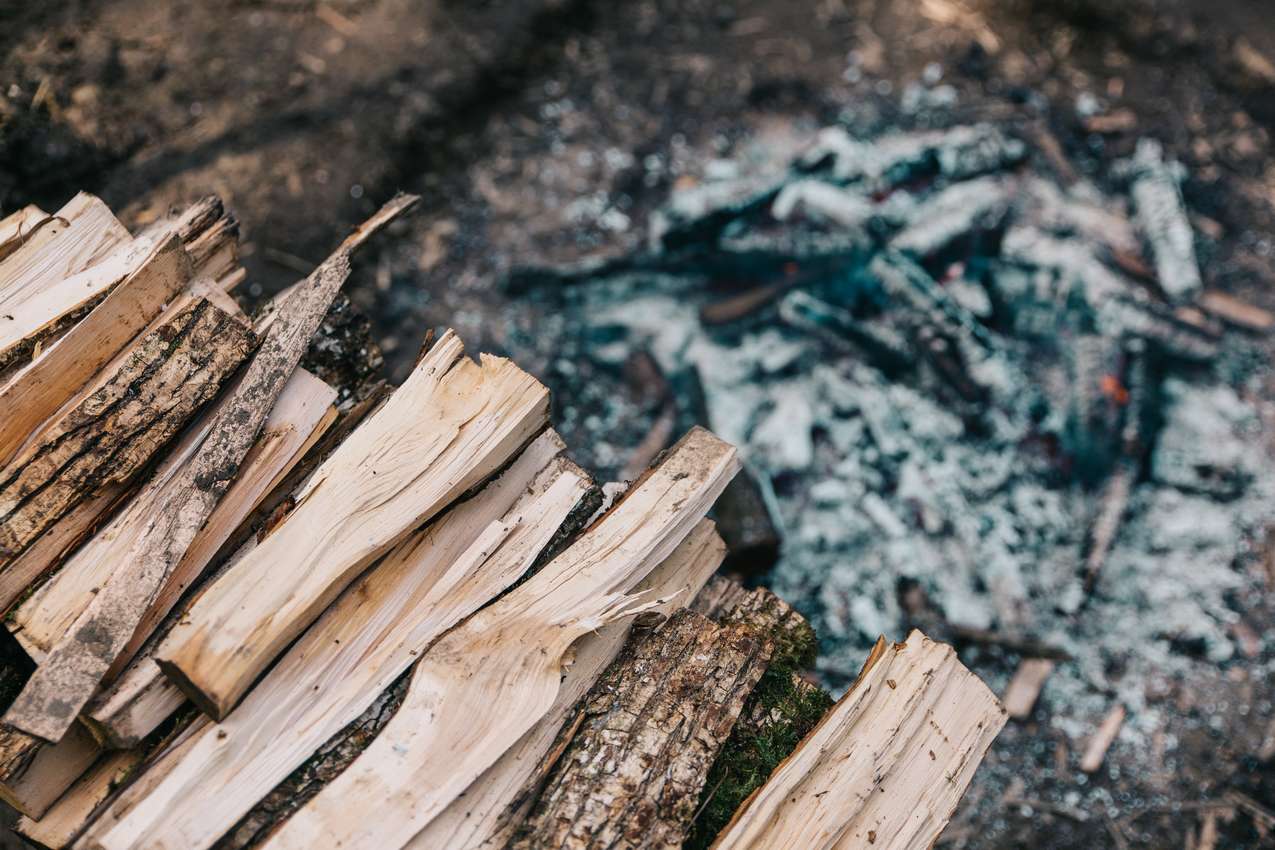
What to do with wood ashes in the garden?
Our tips and tricks
Contents
Wood ash, from the fireplace or stove, can certainly be used in the garden. However, many questions arise: What to do with fireplace ash? Is it a good fertiliser? Can it be added to the compost heap? In the vegetable garden, at the base of tomatoes? On the short grass meadow? Here are our tips for using it effectively in the garden!
The benefits of wood and fireplace ash for the garden
The benefits of ash in the garden
Wood ash is a good fertiliser, as it is known to be rich in:
- Calcium, in large quantities, which helps to reduce soil acidity.
- Potassium, essential for flowering, fruiting, and plant resilience.
- Phosphorus, useful for root development.
- Silica, which strengthens plant tissues.
- Magnesium, beneficial for photosynthesis.
- And various trace elements, in small amounts.
Wood ash is generally used in the garden to:
- Encourage flowering and fruit development.
- Repel gastropods during dry weather.
- Correct the acidity of overly acidic soil.
- Replace lime milk in the orchard.
- Supplement the mineral contributions of compost.
- Improve the structure of heavy soils.
- Limit the growth of certain mosses.
However, the balance of soil is delicate! It is therefore essential not to make massive contributions, as this could disrupt the chemical and biological composition of the soil.
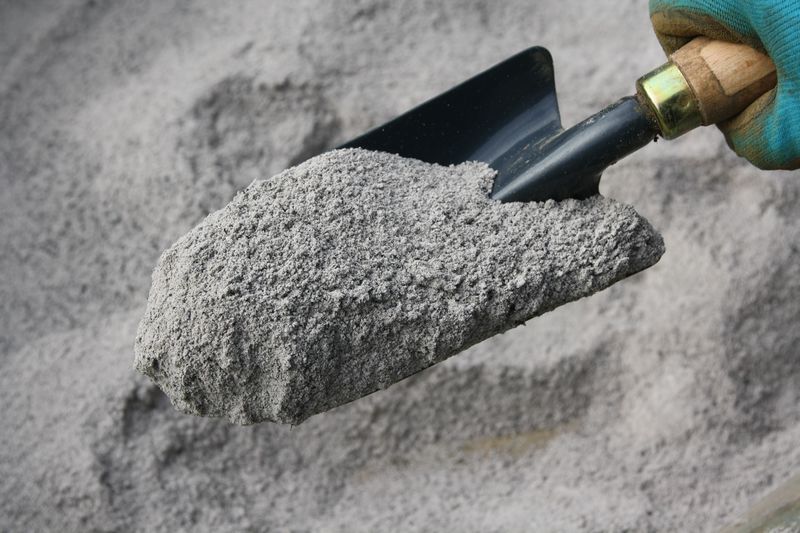
Wood ash can be an asset for the garden.
Which plants enjoy ash in the garden?
Some plants particularly appreciate moderate wood ash applications, as they benefit from its richness in potassium, calcium, and trace elements, as well as its slightly alkalising effect:
- Tomatoes, courgettes, aubergines, peppers, which need potassium.
- Carrots, beets, turnips, which appreciate well-structured soil.
- Peas and beans, which are not demanding but responsive to minerals.
- Apple trees, pear trees, cherry trees, which thrive in balanced soil.
- Peonies, irises, phlox, which enjoy rich and neutral soils.
- Roses, for enhanced flowering.
On the other hand, ash should be avoided for ericaceous plants such as azaleas, camellias, rhododendrons, heathers, and blue hydrangeas, which require acidic soil.
Read also
Nourrir le sol naturellementPrecautions before spreading wood ash in the garden
Before handling wood ash, a few precautions should be taken:
- Ash is slightly caustic, wear gloves when handling it.
- Only use untreated wood ash, free from paint, varnish, glue, or printed paper.
- Allow the ash to cool and sift it to remove large pieces of charcoal or nails.
- Do not apply too much, as excess can imbalance the soil: no more than 70 to 100 g per m² per year.
- Avoid spreading it on already calcareous or potash-rich soils, which do not need it.
- Do not spread it during wet or windy periods, as it can stick or blow away easily. Incorporate it immediately! A simple pass with a rake allows for superficial burial.
- Do not directly combine it with nitrogenous inputs, such as fresh manure or urine, at the risk of losing nitrogen.
- Alternate thin layers of ash in compost to avoid a blocking effect on decomposition.
- Use sparingly on young seedlings, as too much ash can burn their delicate tissues.
When is the best time to spread ashes?
The ideal time to use ash in the garden is at the end of winter, in March or even April. Indeed, the potash contained in the ash is soluble and easily leached away by winter rains. However, you can do this earlier without any danger.
When spreading ash in the garden, be careful not to do so on naked soil, as this can quickly lead to a phenomenon known as crusting: with rain or humidity, the ash forms a crust that hinders the circulation of air and water, making the medium suffocating. This is detrimental to biological life and the growth of plants. Instead, spread the ash over a mulch or incorporate it immediately into the soil with a rake.
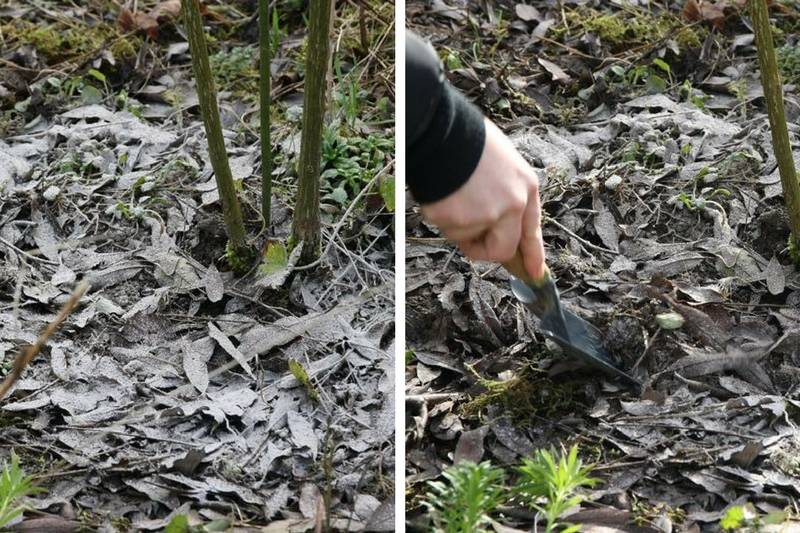 Spread a handful of wood ash at the base of the roses and then incorporate it with a rake or, if necessary, a spade.
Spread a handful of wood ash at the base of the roses and then incorporate it with a rake or, if necessary, a spade.
Read also
Using charcoal in the gardenHow to use ashes in the garden?
How much ash to spread per m²?
The amount of wood ash to spread in the garden should remain moderate to avoid upsetting the soil balance. A dose of 70 to 100 g of ash per m² per year is sufficient, which corresponds to about a small handful. This quantity provides mineral elements (calcium and the like) while limiting the risks of soil over-alkalisation.
Wood ash in the vegetable garden
The potash contained in the ash promotes flowering and fruiting. Due to its basic character, it also helps to correct overly acidic soils. Therefore, you can use ash in the vegetable garden and orchard.
Spread ash in the vegetable garden, between the vegetables in spring. It is particularly beneficial around fruiting vegetables (tomato, aubergine, cucumber, bean…), flowering vegetables (cauliflower, broccoli, artichoke…). Don’t forget root vegetables (potato, carrot, turnip…) whose development is stimulated. Small fruits also appreciate an application of ash.
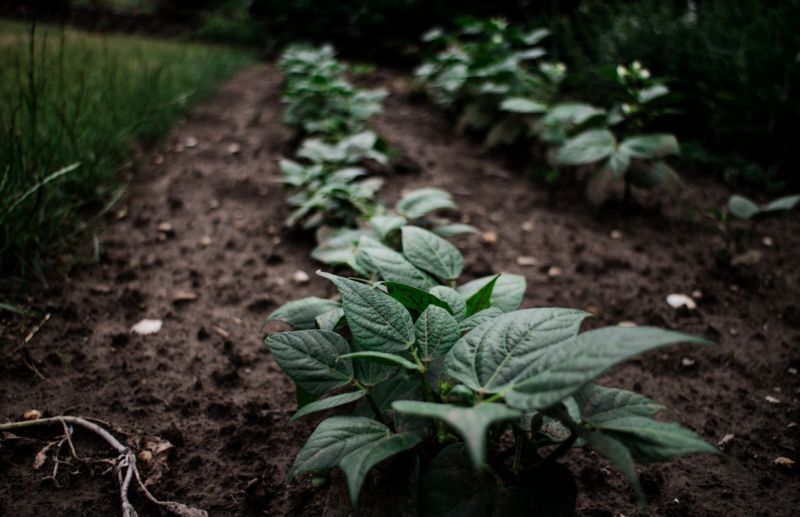
Wood ash in the orchard for fruit trees
You can spread a handful of ash at the base of your fruit trees in spring.
You can also make a wash using ash and water, intended to suffocate the overwintering forms of any pests that may have taken refuge in the crevices of the bark. To do this:
- Sift the ashes.
- Then dilute them with a little water to obtain a paste with the consistency of pancake batter.
- Apply it to the entire height of the trunks like a traditional lime wash.
- Renew regularly, every 3 to 4 months or so, as rain tends to wash it away.
Note: The wash also has slightly insulating properties, providing some protection to the trunks from frost damage.
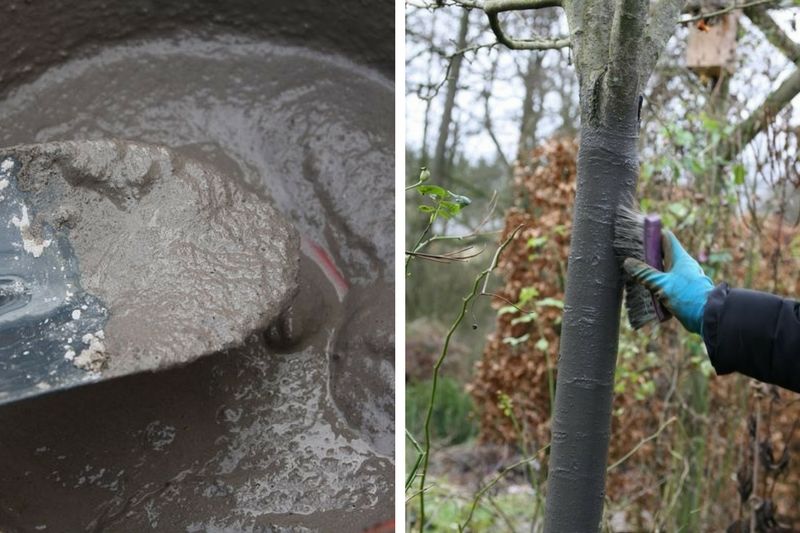
Wood ash in compost
You can add ash to compost, but in limited quantities. Due to its fine texture and high lime content, it tends to hinder proper aeration of the compost and slow down bacterial activity, thus affecting the decomposition of materials. Asphyxiation is even more significant in compacted and wet composts. Therefore, limit the amount to a handful, occasionally.
Wood ash in the ornamental garden
You can certainly use ash in the flower beds of your garden, at the base of plants in general. Be aware that roses appreciate a small handful of ash, resulting in more abundant flowering. Note also that the richness in silica is beneficial for bamboos.
However, do not use it at the base of acidophilous plants such as rhododendrons, azaleas, camellias, Japanese maples, etc. Ash alkalinises the soil.
In very calcareous soil, ash should not be used, as it exacerbates the problems associated with this type of soil. Indeed, excess lime causes a blockage in the assimilation of essential trace elements such as iron (chlorosis) in particular.
Wood ash on the lawn
Devoid of nitrogen, ash does not promote grass growth. However, at the indicated dose, it corrects excessive acidity, it is beneficial for microbial activity in the soil as well as for earthworms. This improves water infiltration and drainage, thus limiting the appearance of moss in the lawn.
Other practical uses of ash in the garden
Do wood ashes help to repel slugs and snails?
You can spread ash, forming a circle, around young plants of recently planted vegetables or around plants prone to the voracity of gastropods.
Just a few centimetres is enough, and the slightly caustic ash hinders their progress. However, it needs to be renewed very regularly. Indeed, dew and rain render it completely ineffective, leading to the use of excessive amounts. It can be useful on occasion, but it is not the best way to protect against slugs and snails.
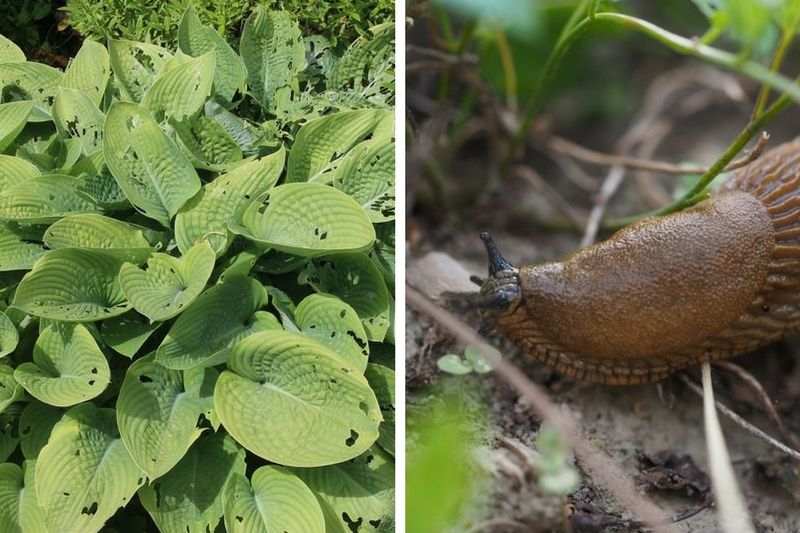
The cordon of ash can, under certain conditions, limit the damage caused by slugs and snails.
Wood ash, an effective weed killer (anti-moss)?
Wood ash is not a weed killer in the strict sense, but it can have a limiting effect on certain unwanted plants, particularly in acidic soils. Its alkalising power modifies the soil pH, which can hinder the growth of certain adventive species that prefer acidic soils, such as plantain or moss.
However, it does not directly destroy weeds and does not replace manual weeding. Beware of excessive use, which could disrupt the microbial life of the soil and upset the ecosystem, thereby favouring the emergence of opportunistic species.
- Subscribe!
- Contents































Comments